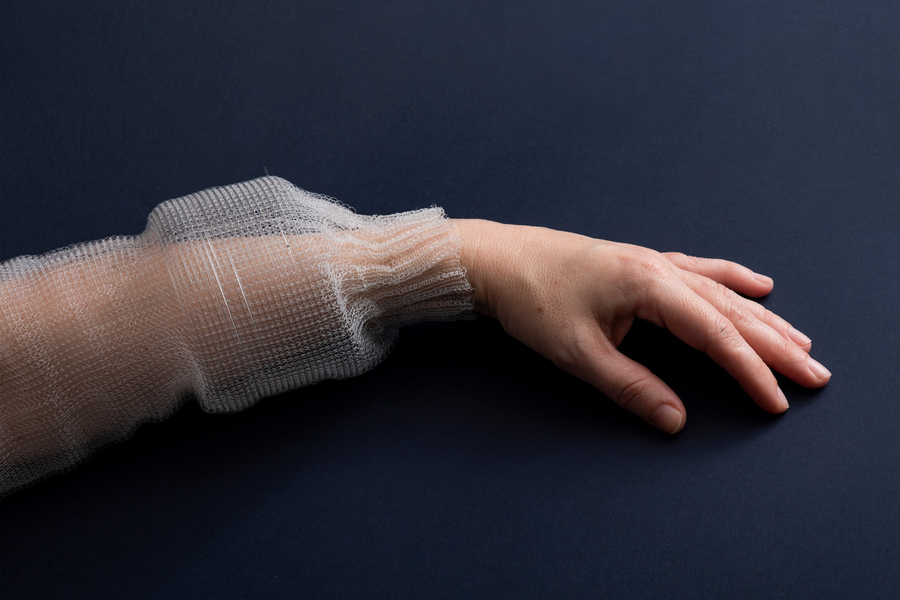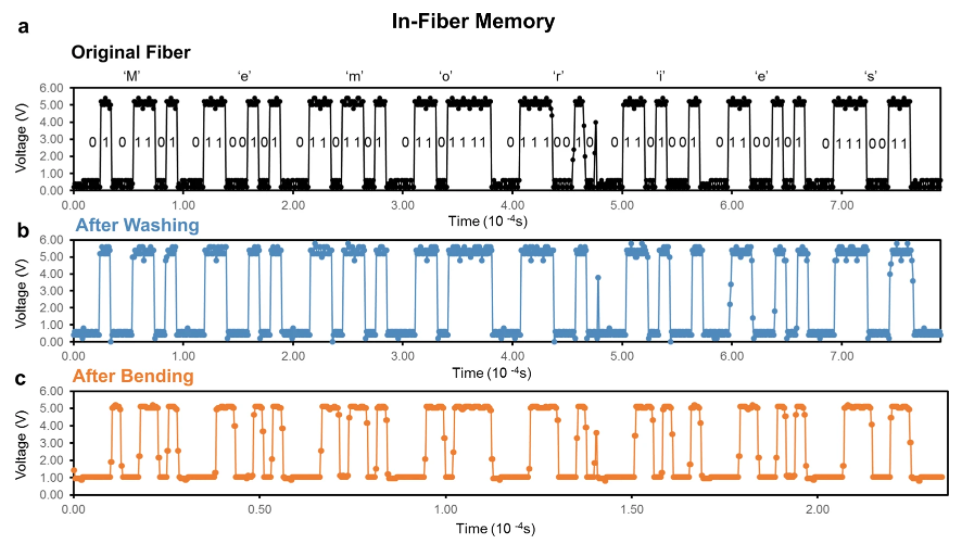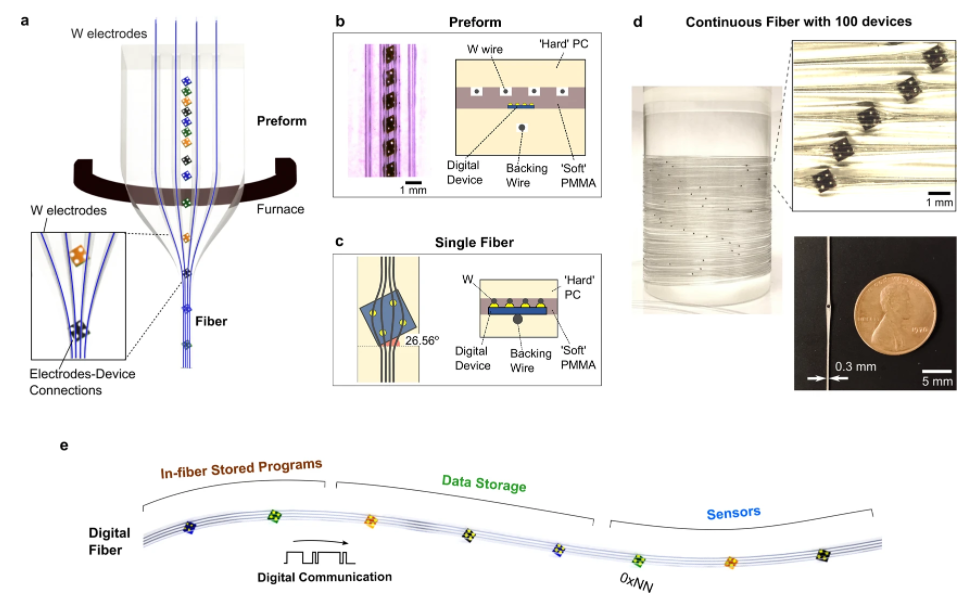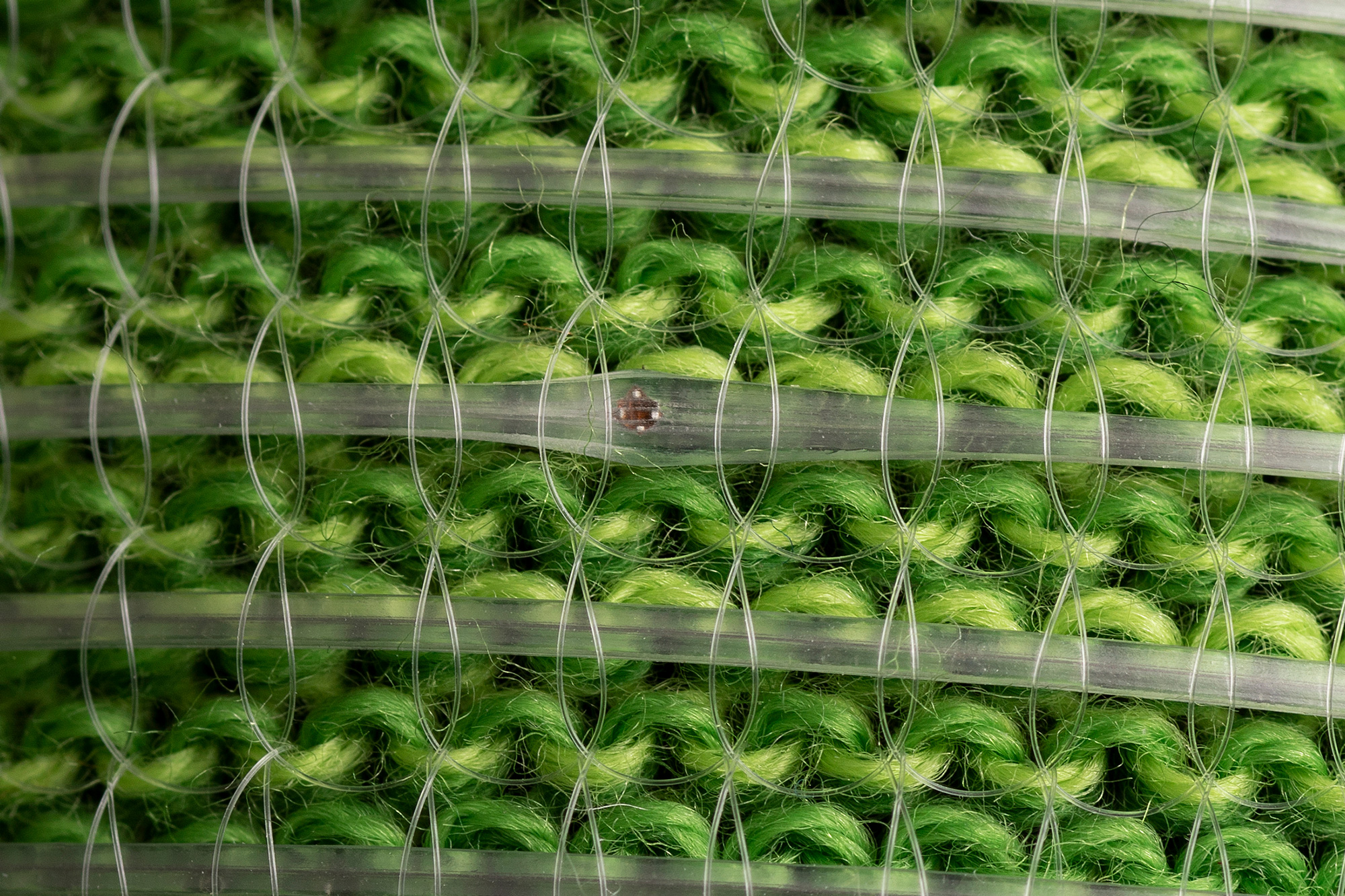New, trendy and smart. Clothing made from programmable fibers

In everyday life, we have begun to use more “smart” electronics. There is even a joke that before leaving the house, you need to recharge your smartphone, laptop, headphones, gyro scooter or scooter (maybe an electric car), as well as vape, watches, smart glasses, a speaker and even smart sneakers. But engineers at the Massachusetts Institute of Technology decided not to stop there and want to add smart clothes to this list. They announced that they successfully developed a programmable fiber… Someday someone will write in an explanatory note that he was late for work because he forgot to put on the charge “smart pants”.
Well, if it’s no joke, then this innovation can be useful and help to reveal some previously unknown information about the human body. The work represents the first implementation of tissue with the ability to store and process data digitally, allowing for literal programming of tissue. It is the ability to implement digital devices in a fiber strand that can not only measure and store physiological parameters, but also support the neural networks needed to output sensory data. This, in turn, opens up intriguing possibilities for tissues that recognize, remember, learn, and define the situational context.

“Smart” still needs to be recognized
“Smart” is not always called the clothes that meet this definition. In addition to special medical or military suits that can actually monitor the state of a person and the environment and process this information, the epithet “smart” in the press can also be applied to clothing that serves only as a platform for attaching electronics, for example, to jackets with built-in players.
A jacket with a built-in pocket for a mobile phone does not become “smart”. “Smart” clothes should add some properties uncharacteristic of clothes to a wardrobe item, so that at the same time its normal functions are not disturbed, for example, so that clothes can be washed and worn. Ideally, smart clothing provides unusual clothing properties such as health monitoring, in addition to the traditional function of clothing to protect the body from environmental influences. Such clothing can, for example, collect data and either automatically transmit it wirelessly to an external computer, or process it on its own and react to the results of calculations without user intervention. “

E-fabrics (also known as electronic fabric or smart fabric) is a type of textile that contains electronics (including small computers) and uses digital technology. Many types of high-tech, smart clothes, as well as technologies that are used in their production, contain electronic textiles.
Until now, electronic fibers have been analog – transmitting a continuous electrical signal – rather than digital, where information can be encoded and processed using discrete bits 0 and 1. The new fiber was created by putting hundreds of silicon chips in preform, which was then used to create polymer fibers. The researchers were able to create fiber with a continuous electrical connection between the chips for tens of meters. The fiber itself is thin and flexible, it can be passed through a needle, sewn into fabric and washed at least 10 times without losing the information stored in memory. Within 1 meter of fiber, 767 kilobits of information can be stored.

Writing and reading binary information: for initially thermally drawn fiber (clock frequency: 100 kHz), after 10 wash cycles (clock frequency: 100 kHz) and after bending a fiber with a radius of curvature of 12 mm (clock frequency: 300 kHz).
Designers in shock
The development represents the first implementation of a fabric capable of storing and processing data digitally, adding a new dimension of information content to textiles and allowing fabrics to be literally programmed. Individual elements along the fiber can be controlled from a single point at the end of the fiber. Fabric made from these fibers can be used to monitor physical performance, medical reports, and early detection of disease.
Adding an artificial intelligence component to fiber further enhances its capabilities, the researchers said. Tissues with digital components can collect information throughout the body over time, providing data that can be used for machine learning algorithms. Thanks to their analytical ability, fibers will someday be able to detect and alert people in real time to changes in health, such as decreased respiratory function or irregular heartbeat, and also transmit data about muscle work or heart rate of athletes during training.
The new fibers have a number of distinguishing characteristics compared to previous developments:
- 1. Introduction of digital components into a flexible strand of polymer fiber.
- 2. Removal of restrictions on the use of one fiber and one device, so that a single fiber can provide a scalable variety of different addressable digital functions.
- 3. Access to devices (internal to the fiber) is opened through a single connection port at the end of the fiber.
- 4. The sensory data collected by the fiber is stored in the fiber itself.
- 5. The fiber stores not only sensory data, but also a neural network trained to infer context from the data.
Homogeneous busbars, connected to devices embedded along the entire length of the fiber, reduce the number of discrete electrical connections, which are a major source of mechanical and electrical vulnerability. To create such a fiber, hundreds of silicon microcircuits are placed in grooves inside a polymer blank. Each microcircuit is placed at an angle of 26.56 ° with respect to the fiber axis. This specific angle allows four coplanar and coaxial tungsten wires (25 μm diameter) to be individually connected to four separate power and signal ports on each chip.

a – Thermal stretching of a digital fiber preform by feeding a conductive tungsten wire into empty channels. b – Schematic representation of a preform (PMMA – polymethyl methacrylate, PC – polycarbonate). c – Drawn fiber diagram. d – Continuous digital fiber with 100 embedded devices. e – Illustration of a thermally drawn digital fiber containing chips with different functions such as memory or reading.
Each of the chips is represented by a unique and different numeric address in hexadecimal format (0xNN). The four wires in an optical fiber serve different functions: a signal line for exchanging data between fiber optic devices, a synchronization line for regulating communication signals, a ground line, and a power line. Backing wire, an additional wire (50 µm) is fed under the base of the device as a support to align the devices along the fiber length. This wire provides mechanical support for the devices in the fiber and has no electrical contact with the device. The dual approach, consisting of a combination of a soft and hard polymer and a carrier wire, provides reliable electrical contacts between the wires and the device.
By sending a unique sequential combination of digital 1s and 0s, you can “turn on” the device with the correct matching digital address along the fiber. For this, a digital addressing protocol was introduced into the optical fiber. I²C… With this protocol, multiple fiber optic devices can use the same four tungsten wire electrodes, but with different digital addresses, they are logically isolated from each other.


a – Individual digital addressing of various devices in the fiber optic. b – Digital fiber passed (i) through a needle, (ii) in the sleeve of a sweater and (iii) in a cotton base fabric.
Digital memory fiber has several advantages over previous studies (analog):
- 1. It only takes 3.3 V to switch zero to one, while the power consumption while writing and reading new information is 5.5 mW compared to 475 mW in analog memory.
- 2. Ability to have more memory in one strand of fiber. For example, video and audio were successfully stored on test fiber for 2 months without power.
Try to be smart without AI
Fiber is also taking several steps forward in the development of artificial intelligence, incorporating a neural network of 1,650 connections in fiber memory. Sewing it to the armpit of a shirt, the researchers used the fiber to collect 270 minutes of data on the surface temperature of the person wearing the shirt, and analyze how that data correlates with different physical activity. Trained on this data, the fiber was able to determine with an accuracy of 96% what the person wearing it was doing.
Adding an AI component to fiber further enhances its capabilities, the researchers said. Tissues with digital components can collect a lot of information throughout the body over time, and this “rich data” is ideal for machine learning algorithms.
With this analytic ability, fibers will someday be able to detect and alert people in real time to changes in health, such as decreased breathing or irregular heartbeats, or relay muscle activation or heart rate data to athletes during exercise.
The fiber is controlled by a small external device, so the next step is to develop a new chip as a microcontroller that can be plugged into the fiber itself. When this is done, it can be called a “fiber optic computer”.
This research was supported by the U.S. Army Soldier Nanotechnology Institute, the National Science Foundation, the U.S. Army Research Office, the MIT Maritime Grant, and Threat Reduction Agency of the United States Department of Defense…
Wearable devices have long been considered the future of smart technology. What used to be a wristwatch and headset industry is slowly evolving into a smart textile industry.
For the most part, modern wearables are still pretty niche products. Of course, fitness trackers have spread throughout society, but how many people do you know who use smart glasses or continue to wear their fitness trackers even after they buy them (about 30 percent of people who buy them end up stopping wearing them) )? This underutilization suggests that the wearable device industry still has a long way to go before their benefits outweigh their inconveniences – and smart textiles are one avenue.

Advertising
Cloud hosting for everyone! Cheap VDS Powered by the latest processors from AMD and Intel, triple redundant NVMe storage. Our services are suitable for hosting projects of any complexity, from corporate networks and game projects to landing pages and VPNs. You can create your own server configuration in a couple of clicks!
Subscribe to our chat in Telegram…






